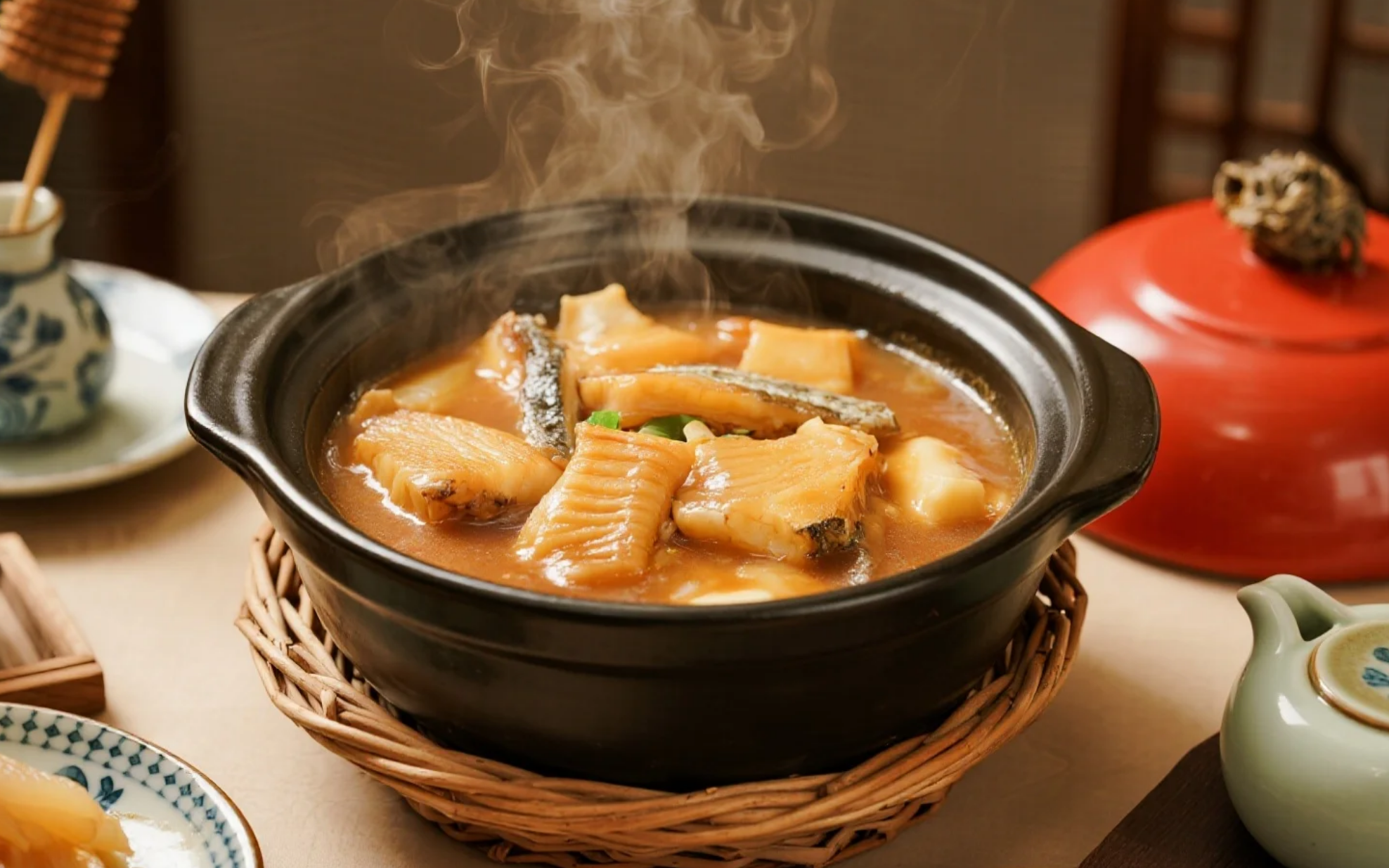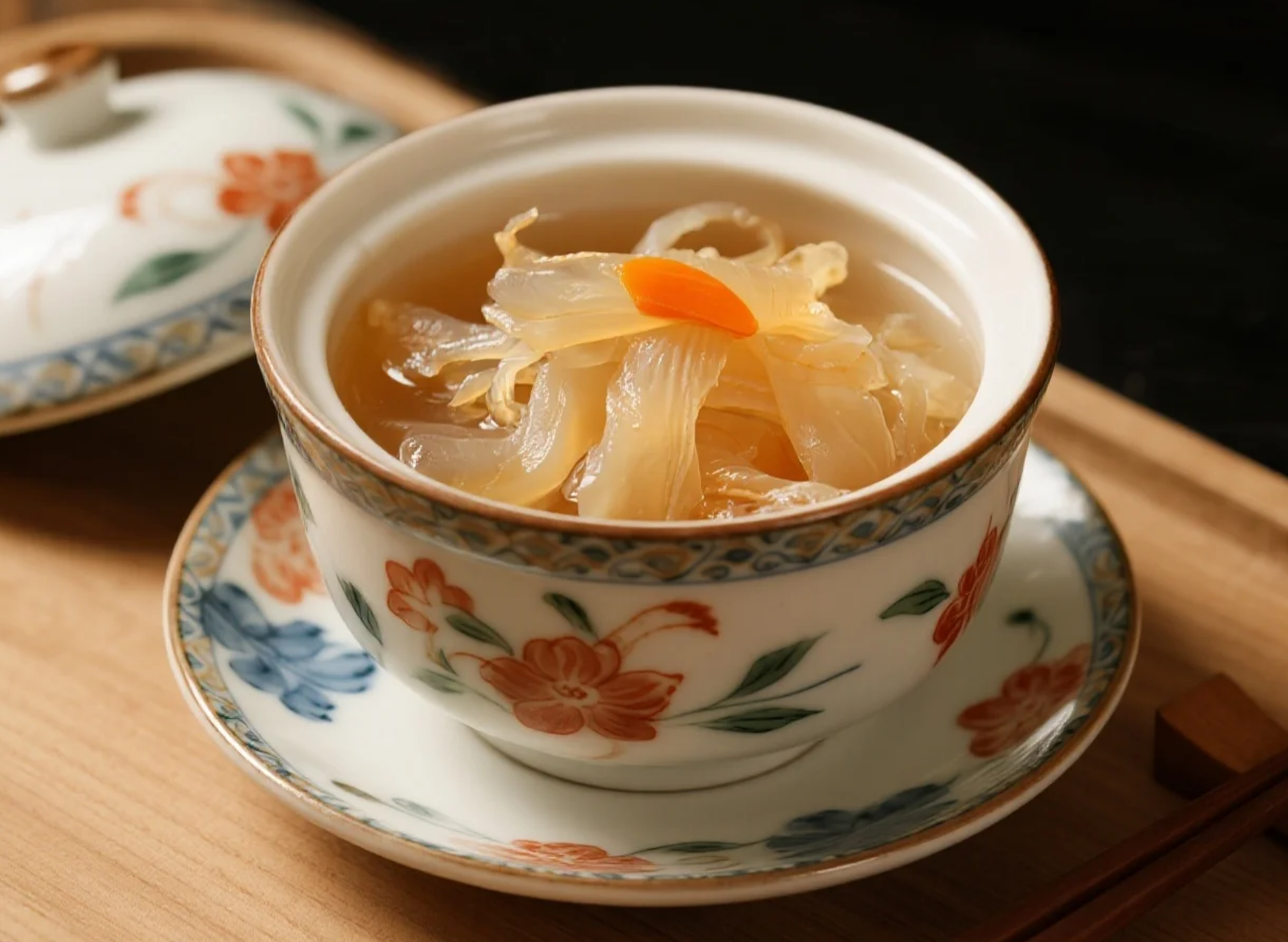In traditional Chinese culinary culture, shark fin soup has long been considered a delicacy at banquets, its unique texture and delicious flavor captivating countless diners. This imperial dish, originating from the Ming and Qing dynasties, was originally a nourishing delicacy prepared by the imperial kitchen for the royal family. It later spread to the general public and became a symbol of high-end banquets. Shark fins are harvested from shark fins and, after a complex drying, sand removal, and soaking process, are stewed in premium broth to create this golden delicacy.
 Traditional shark fin soup is meticulously prepared, typically using ingredients such as old hens, ham, and dried scallops to slowly simmer the broth. The soaked shark fins are then added and simmered gently. The resulting soup is a translucent golden broth, the shark fins are translucent, and the taste is smooth, tender, and delicious, a true masterpiece of Chinese culinary artistry. At important occasions such as weddings and birthday banquets, shark fin soup is often served as the first course, demonstrating the host's respect and sincerity.
Traditional shark fin soup is meticulously prepared, typically using ingredients such as old hens, ham, and dried scallops to slowly simmer the broth. The soaked shark fins are then added and simmered gently. The resulting soup is a translucent golden broth, the shark fins are translucent, and the taste is smooth, tender, and delicious, a true masterpiece of Chinese culinary artistry. At important occasions such as weddings and birthday banquets, shark fin soup is often served as the first course, demonstrating the host's respect and sincerity.
However, with the changing times, this traditional delicacy faces severe ecological and ethical challenges. According to the Wildlife Conservation Society, approximately 73 million sharks are killed annually for the shark fin trade, pushing several shark populations to the brink of extinction. Even more distressing, shark fishermen often employ the cruel practice of "finning and discarding," removing the fins of live sharks and then throwing them back into the sea, leaving them to die a painful death. This unsustainable harvesting method has severely impacted the balance of marine life.
It is encouraging to note that new culinary trends are emerging in contemporary Chinese society. An increasing number of Michelin-starred restaurants and five-star hotels are proactively removing shark fin from their menus, and many couples are no longer choosing shark fin soup for their wedding banquets. Well-known domestic restaurant chains such as Quanjude and Dadong have launched imitation shark fin soups made with ingredients such as vegetarian shark fin and agar-agar, preserving the traditional flavor while minimizing ecological damage. These innovative dishes, incorporating ingredients like bamboo fungus, white fungus, and dried scallops, perfectly replicate the texture and taste of shark fin through modern cooking techniques, earning widespread acclaim from diners.
As inheritors of culinary culture, we should embrace innovation in traditional cuisine with a more open and inclusive mindset. In Guangdong, Hong Kong, and Macao, many veteran chefs are developing high-end soups that use sustainable seafood like fish maw and sea cucumber as alternatives to shark fin. In Shanghai's local restaurants, chefs skillfully enhance their soups with wild delicacies like matsutake and yellow ear mushrooms. These innovations not only protect the environment but also advance Chinese culinary culture.
Modern consumers can enjoy delicious food while also being environmentally friendly by:
When choosing a restaurant, prioritize those with environmentally friendly practices.
Try innovative soups made with alternatives like shark's fin and fish maw.
Discover regional health-promoting soups, such as West Lake Water Shield Soup and Yunnan Matsutake Soup.
 When making homemade broth, incorporate naturally flavorful ingredients like mushrooms and scallops.
When making homemade broth, incorporate naturally flavorful ingredients like mushrooms and scallops.
The true essence of culinary culture lies not in the rarity and costliness of ingredients, but in the care and innovation of cooking. Let us work together to protect marine ecosystems, while preserving the essence of Chinese cuisine and creating a greener and more sustainable culinary future. After all, true food should bring peace of mind to the eater and delight the natural world—this is the highest level of harmony between man and nature in Chinese culinary culture.
A Western Restaurant Style: Rich and Flavorful Cream of Mushroom and Ham SoupHave you ever be
A Summer Health Essential: Refreshing Luffa, Shiitake Mushroom, and Tofu Skin SoupOn a scorch
Summer Cooling Soup: A Delicious Dishes for Clearing Heat and Relieving Internal HeatIn the s
Spicy and Sour Thai Tom Yum Goong: Recreate Authentic Thai Flavors at HomeThai Tom Yum Goong
Korean Doenjangjang: A Traditional, Heartwarming Homemade DishKorean doenjangjang \(된장찌개\) is
Rich, sweet and sour borscht: A warming Eastern European classicBorscht, a classic Eastern Eu
Miso, Kelp, and Tofu Soup: A Distillation of Millennia of Japanese Culinary WisdomIn the hall
Reflections on a Delicacy: Shark Fin Soup: The Heritage and Innovation of Chinese Culinary Cult
Five\-Minute Microwave Baked Chicken Wings: Easy Even for BeginnersOn Friday evening, tired f
Oven\-cooked Salt and Pepper Mantis Shrimp: A Delicious Feast with Minimalist CookingIn today
© Copyright 2024 Tastemaker- User Agreement - About - Privacy Policy - Contact Us